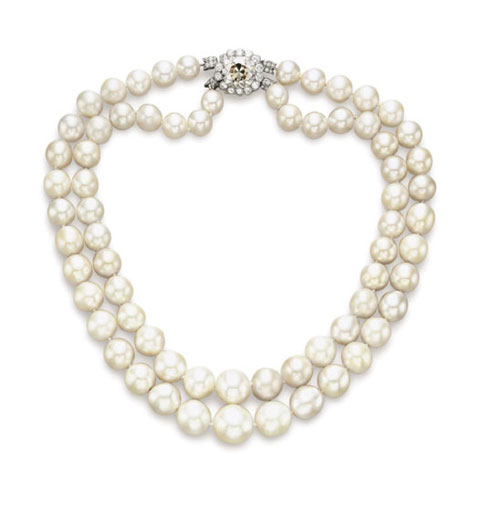Move over diamonds! With these flawless pearls, girls may just have found a new best friend
By Kristelle Devieux
Upon marrying Maharaja Gaekwar in 1943, Sita inherited the jewels from the Baroda treasury, a prized stash that included the seven-strand Baroda Pearls.
The Baroda Pearls, a necklace made up of the most perfect natural jewels from the sea, will lead Christie’s Magnificent Jewels auction on April 25th in New York City. The Baroda Pearls represent the first pearl necklace of such significance to be offered for auction. The exceptional Baroda Pearls are a historic masterpiece; this set was originally part of a seven-strand necklace that belonged to the Royal Treasury of the Maharaja of Baroda.
Rahul Kadakia, head of jewelry for Christie’s Americas, explains their important provenance: “Having amassed huge quantities of pearls from all over the Gulf region, the Indian Royal families were famed for the superlative natural pearls in their treasuries. The seven-strand Baroda Pearl necklace was the masterpiece of all these collections.” The Baroda Pearls was the most prized and stunning piece of all the Indian Royal families combined.
The earliest known origin of the Baroda Pearls is attributed to the Maharaja of Baroda, Khande Rao (1856-1870), known to be one of the largest jewelry collectors of the nineteenth century. He owned an incomparable collection of lavish pieces that dated back to the Mughal times. Khande Rao came to possess the seven-strand Baroda Pearls, which became-and remained- the most expensive and luxurious piece of jewelry in the Baroda treasury. Later on, Pratapsingh Gaekwar, the Maharaja of Baroda from 1939 to 1947, married Sita Devi, known as one of the most flamboyant maharajanis of all time. Her passion for jewelry and strong personality made her an icon of her time, comparable to today’s Elizabeth Taylor. Upon marrying Maharaja Gaekwar in 1943, Sita inherited the jewels from the Baroda treasury, a prized stash that included the seven-strand Baroda Pearls. Many of Sita Devi’s jewelry were later on sold in Monaco but the Baroda Pearls, being the most prized piece, remained in the treasury.
The Baroda Pearls necklace represents an exceptional piece for jewelry collectors. The necklace belongs to an important historical and royal heritage, but it doesn’t end there; the pearls’ unsurpassed quality and outstanding rarity make it an exceptional piece, never before available at auction. The splendid Baroda Pearls necklace is comprised of two-strands of 68 pearls flawlessly matched in shape, color and luster. Those pearls were the largest and most perfect ones taken from the fourth, fifth, sixth and seventh strand of the original necklace. The two large strands connect through a cushion-cut diamond Cartier clasp. Furthermore, the necklace is complemented by a ring en suite, a pair of natural pearl and diamond ear pendants, and a brooch. Such a luxurious necklace is expected to collect around $7-9 million.





















